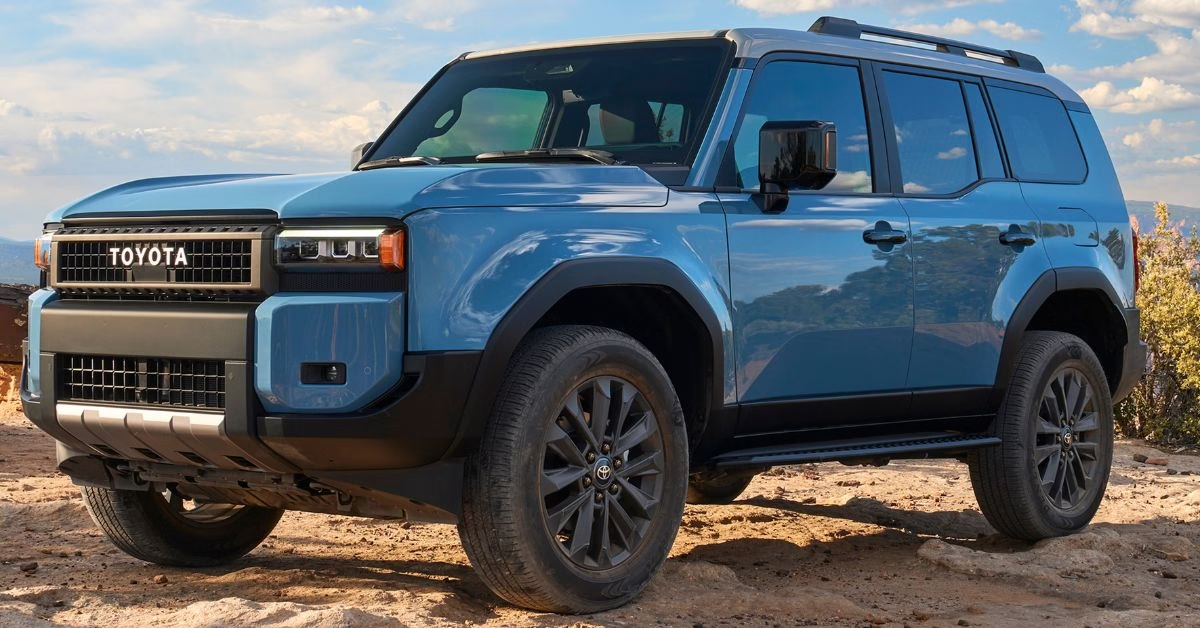The Toyota Land Cruiser Prado LC250 represents a significant evolution in Toyota’s renowned SUV lineup, offering a compelling blend of off-road capability, modern technology, and refined comfort. While the LC250 is making its presence felt in the Kenyan market, its price point makes exploring comparable alternatives a prudent approach for many buyers.
Below, we delve into four compelling alternatives available in Kenya, focusing on models from 2018 onwards to ensure a balance of modern features and value. These SUVs offer comparable features and capabilities to the LC250 and provide buyers with a diverse range of choices within a similar segment.
Lexus GX
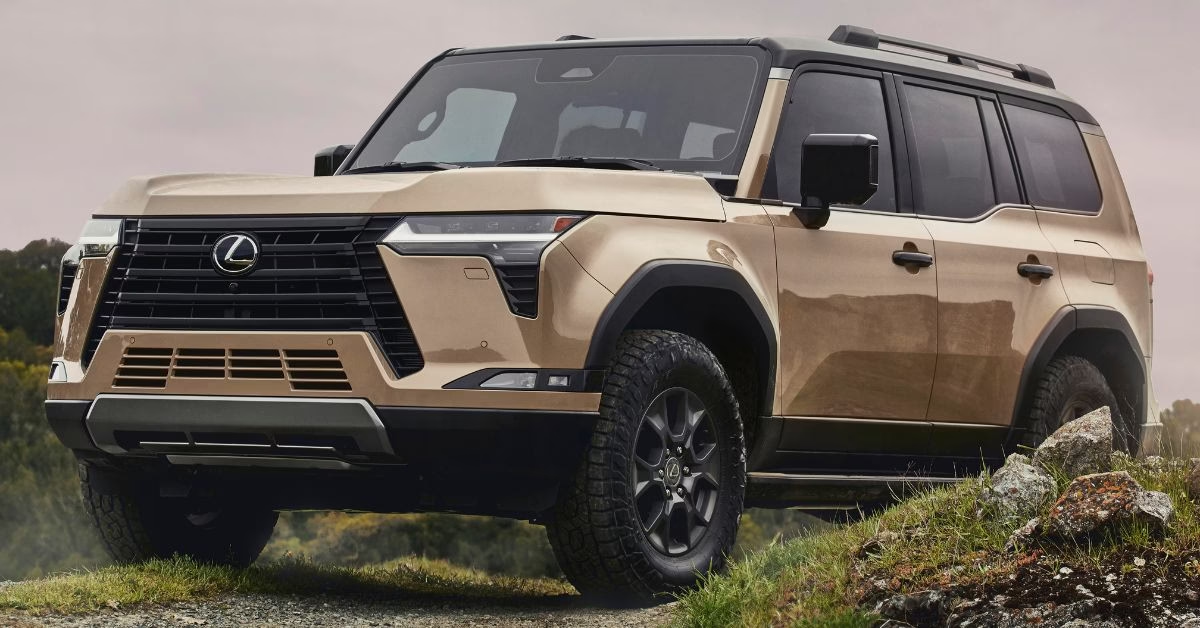
The 2024 Lexus GX marks a significant departure from its predecessor, moving to a new platform and adopting a more rugged and modern design language. It aims to blend luxury with genuine off-road capability. This highly capable off-road SUV boasts a selection of features like the GA-F platform (shared with the new Land Cruiser 300), a body-on-frame platform known for its strength and rigidity, crucial for off-road performance.
It also gets a full-time 4WD system with a Torsen limited-slip center differential. For even better traction off-road, Lexus adds an electronically controlled locking rear differential. The GX also gets a double-wishbone front suspension and a multi-link rear suspension. All these qualities coupled with Multi-Terrain Select (MTS) with modes for different terrains (Mud, Sand, Rock, etc.), Crawl Control, and Downhill Assist Control make the GX a force to reckon with off-road.
| Approach Angle | 26 Degrees |
| Breakover Angle | 24 Degrees |
| Departure Angle | 23 Degrees |
| Ground Clearance | 22.1 cm |
Unlike the LC250 Prado, the new Lexus GX gets a mightier 3.5-litre twin-turbocharged V6 engine (V35A-FTS), similar to that in the larger siblings, the Lexus LX and Toyota Land Cruiser LC300. In the GX, this engine produces an impressive 354 hp and 650 Nm of torque. Lexus also pairs this V6 with a 10-speed automatic transmission. Unfortunately, the GX is not yet available with a diesel engine, however, during the global release, Lexus announced a more efficient 2.4-litre hybrid four-cylinder engine.
| Engine Code | V35A-FTS |
| Displacement | 3.5 L V6 |
| Transmission | 10-speed automatic |
| Drivetrain | 4WD |
| Horsepower | 354 hp |
| Torque | 650 Nm |
| Fuel | Petrol |
| Towing | 3.5 Tonnes |
Differences and Comparisons:
- Luxury and Refinement: The GX is a more luxurious and refined alternative to the Prado, with a more premium interior and advanced technology.
- Engine: The GX offers a powerful twin-turbo V6 petrol engine, while the Prado offers two four-cylinder engines, including a diesel option (which is generally preferred for its fuel efficiency).
- Price: The GX generally has a higher price point compared to the Prado. New models sell for about KSH 10.2 million (pre-import/tax) while the Prado LC250 sells for a fraction of that. In addition, on the Kenyan market, some models fetch almost KSH 30 million compared to the Prado LC250’s KSH 17 million. For even better value, the LC300 sells for almost the price of the LC250 Prado.
Ford Everest
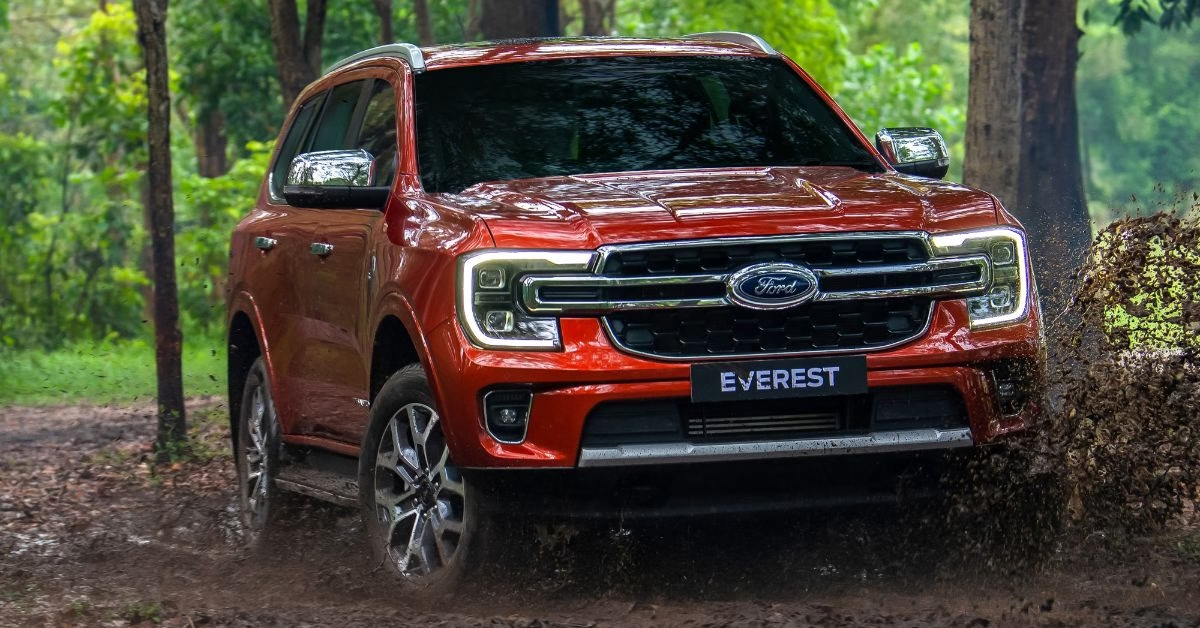
The second and third generations of the Ford Everest use the T6 Ford Ranger platform. While not common on the Kenyan market, the Ford Everest is a great alternative to the new Toyota Land Cruiser Prado LC250. Like the Prado, the Everest is a body-on-frame SUV, loved in some markets thanks to its practicality, ruggedness, and modern technology.
Unlike variants like the GX which get a full-time 4WD system, the Everest is either available with part-time 4WD with the higher trims getting a full-time 4WD system and an electronic locking rear differential. The part-time system is equally capable, boasting electronic shift-on-the-fly capability. Ford also equips the Everest with independent front suspension and solid rear axle with coil springs for a balance between on-road comfort and off-road capability.
| Approach Angle | 30.3 Degrees |
| Breakover Angle | 21.9 Degrees |
| Departure Angle | 23.3 Degrees |
| Ground Clearance | 22.6 cm |
Ford offers two engine options in the modern Everest: a twin-turbocharged 2.0-litre diesel and a 3.0-litre turbocharged V6 diesel (both more powerful than Toyota’s offerings in the LC250 Prado). The latter is the more powerful with the base variant producing 209 hp and 500 Nm of torque. For those seeking more performance, the V6 boasts 248 hp and 600 Nm of torque. Both engines pair with a 10-speed automatic transmission, powering the rear or four wheels depending on the trim.
| Engine Code | Panther (EcoBlue) | Power Stroke |
| Displacement | 2.0 L I4 | 3.0 L V6 |
| Transmission | 10-speed automatic | 10-speed automatic |
| Drivetrain | RWD, 4WD | 4WD |
| Horsepower | 209 hp | 248 hp |
| Torque | 500 Nm | 600 Nm |
| Fuel | Diesel | Diesel |
| Towing | 3.5 Tonnes | 3.5 Tonnes |
Differences and Comparisons
- Chassis: Both are body-on-frame SUVs, but the Everest is based on the Ranger pickup, giving it a slightly different focus.
- Engines: The Everest offers more powerful diesel engine options compared to the Prado LC250.
- Technology: The Everest generally offers more modern technology and infotainment systems compared to the Prado.
- Brand Perception: Toyota has a very strong brand image in Kenya, which can influence resale value.
Toyota Fortuner
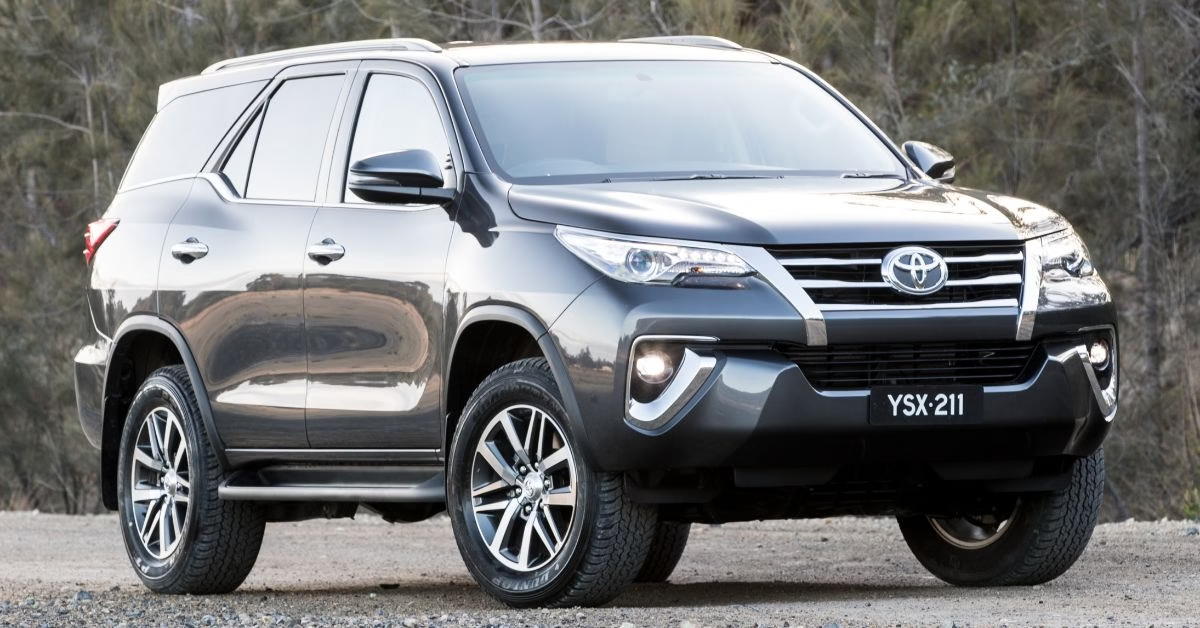
Like all SUVs on this list, the Toyota Fortuner is a body-on-frame SUV based on the Toyota Hilux pickup truck. It’s loved for its practicality, off-road capability, and ruggedness, making it a popular choice in Kenya. Like the Prado, the Fortuner is a 4WD SUV, however, this part-time system gets low-range gearing, requiring manual engagement.
Toyota equips the Fortuner with a double-wishbone front suspension and a multi-link rear suspension, providing a good balance of on-road comfort and off-road capability. These qualities, coupled with features like electronic stability control, hill descent control, traction control, and a locking rear differential make the Fortuner a force to reckon with off-road.
| Approach Angle | 29 Degrees |
| Breakover Angle | 23 Degrees |
| Departure Angle | 25 Degrees |
| Ground Clearance | 22.5 cm |
The modern Fortuner is mainly available with two diesel engines: a 2.4 litre and a 2.8 litre, both inline-fours. The base engine, the 2.4-litre turbo diesel produces 148 hp and 400 Nm of torque. However, the larger 2.8-litre turbo diesel ups the performance to 201 hp and 500 Nm of torque, enabling the Fortuner to tow up to 3,100 tonnes.
| Engine Code | 2GD-FTV | 1GD-FTV |
| Displacement | 2.4 L I4 | 2.8 L I4 |
| Transmission | 6-speed manual/automatic | 6-speed automatic |
| Drivetrain | RWD, 4WD | RWD, 4WD |
| Horsepower | 148 hp | 201 hp |
| Torque | 400 Nm | 500 Nm |
| Fuel | Diesel | Diesel |
| Towing | 3.0 Tonnes | 3.1 Tonnes |
Differences and Comparisons
- Platform: Fortuner is based on the Hilux pickup platform (body-on-frame), while the Prado uses a more refined body-on-frame platform. This gives the Prado a more comfortable on-road ride.
- Off-Road Capability: Both are highly capable off-roaders promising better articulation and suspension travel, ideal for extreme off-road situations.
- Interior Space and Luxury: The Prado generally offers a more luxurious interior compared to the Fortuner.
- Price: The Fortuner is typically more affordable than the Prado with locally available models retailing for under KSH 7 million.
Isuzu MU-X
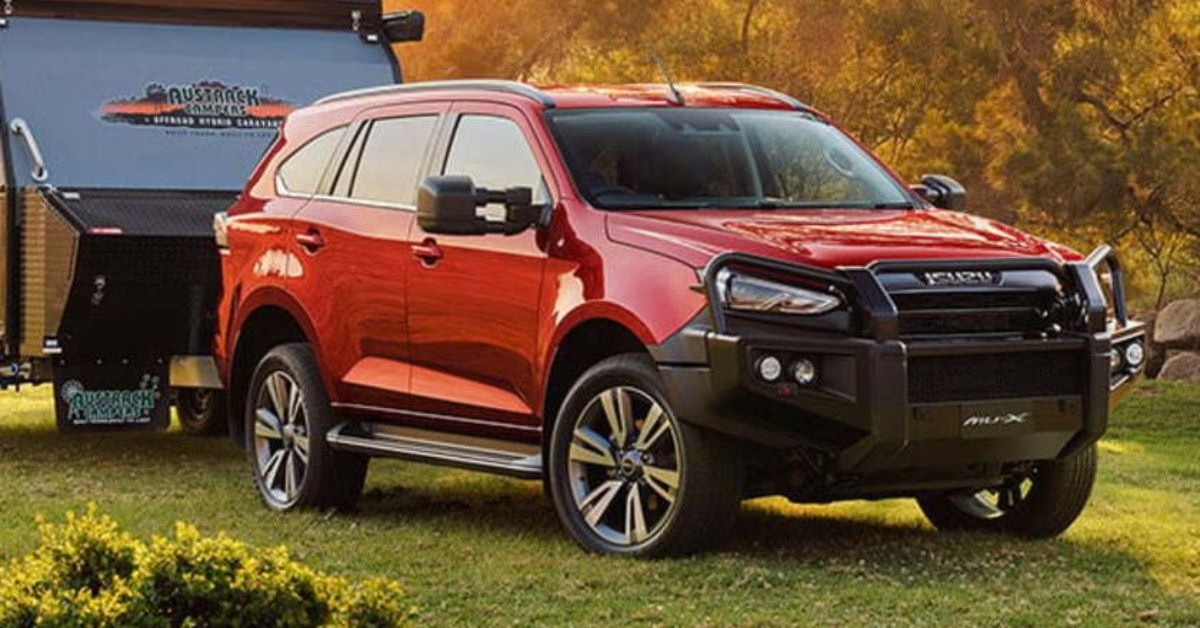
Introduced in 2013, the Isuzu MU-X is a relatively new entrant to the body-on-frame SUV segment. Like the Fortuner and the Everest, the MU-X is a pickup truck-based SUV. It uses the robust Isuzu D-Max pickup truck platform, inheriting its strength and off-road chops. It’s a worthy rival to the Prado, but also pickup-based three-row SUVs like the Fortuner.
Like its rivals, the MU-X boasts a part-time 4WD system which typically uses a dial to switch between 2WD, 4WD High, and 4WD Low. The MU-X also gets a locking rear differential, providing even better traction during extreme off-road adventures. Isuzu also equips the MU-X with an independent front suspension and a five-link rear suspension. This setup works hand in hand with driving aids like hill start assist and hill descent control for enhanced off-road use.
| Approach Angle | 29.2 Degrees |
| Breakover Angle | 23.1 Degrees |
| Departure Angle | 26.9 Degrees |
| Ground Clearance | 23.5 cm |
Like the Prado, Fortuner, and Everest, the MU-X is only available with two diesel powertrains: a 1.9-litre turbo diesel and a 3.0-litre turbo diesel. The base engine boasts 148 hp and 350 Nm of torque while the more potent engine produces 188 hp and 450 Nm of torque. While it’s not the most powerful SUV in the bunch, it has enough on-road and off-road chops.
| Engine Code | RZ4E-TC | 4JJ3-TCX |
| Displacement | 1.9 L I4 | 3.0 L I4 |
| Transmission | 6-speed automatic | 6-speed automatic |
| Drivetrain | RWD, 4WD | RWD, 4WD |
| Horsepower | 148 hp | 188 hp |
| Torque | 350 Nm | 450 Nm |
| Fuel | Diesel | Diesel |
| Towing | 3.0 Tonnes | 3.5 Tonnes |
Differences and Comparisons
- Off-Road Capability: Both the Isuzu MU-X and the Toyota Land Cruiser Prado have highly capable 4WD systems, making them robust off-roaders.
- Interior Refinement: The Isuzu MU-X has a practical and functional three-row interior. However, the Prado LC250 boasts a refined and more luxurious interior.
- Engine Options: Isuzu pairs the MU-X with two efficient diesel engines. Toyota on the other hand equips the Prado LC250 with petrol and diesel engines.
- Market Positioning: The MU-X is a value-oriented practical SUV like the Toyota Fortuner. However, the Land Cruiser Prado LC250 is a more premium and refined SUV, hence a wider price gap.
Let MotorQuips help you find your perfect car. Contact us today.

